- Home
- Tours
- Cities
- Journal
- News
- Blog
- Why Choose us?
- Iran Travel Guidelines
- Iranian Calendar
- Yalda Night In Iran
- Iranian Food
- Iranian Train Railway
- Nomads
- Hijab in Iran
- Can I Drink Alcohol In Iran?
- 10 things tourists must know before traveling to Iran
- Clothing Guideline
- Fascinating Villages in Iran
- IRAN Intangible Cultural Heritage in UNESCO
- Services
- Contact us
- About Us
Iran archaeological and educational tour
Iran archaeological and educational tour
allows you to explore the fabled capitals of the ancient Persian empire with our professional tour leaders in Iran’s archaeological and educational Tour.
On this tour, you will have the best experience of visiting the most exquisite places in the world, across Iran such as Pasargadae and Persepolis where one of the greatest empires “Achaemenid” once ruled!
and even Sassanid empire(224-651 A.D) monuments such as Ardeshir Babakan castle or the Islamic monuments.
In Iran’s archeological and educational tour, we will also visit “Persian Gardens” which make you feel like you are in paradise!
Here’s the fun part during our visit to Grand bazaars you get to socialize with Iranian people and also see and buy Persian hand arts!
Don’t forget that during our visit to different cities, we’ll try delicious Iranian cuisine as well!
so, if this is what you’ve been looking for, there’s no time to hesitate!
If, for your next trip to Iran, you are looking for a destination with heritage and thousands of years of traditions, with curious, open, welcoming, and hospitable people, where you need to go beyond the clichés and where the freeness of spirit and understanding are necessary attractions, look no further: Iran is for you!
Iran archeological and educational tour is a complete and outstanding trip to Tehran, Shiraz, Isfahan, Kashan, Hamedan, Kermanshah, Takab, Tabriz, Kaleibar, Ardabil, Masooleh, Ghazvin ,and Alamoot, which provides you a good chance to visit the west, center, and northwest of Iran. Certainly, this tour is the best choice in spring and summer.
West and Northwest Iran have a diversity of ethnic groups such as Kurds, Turks, and Lors.
These ethnic groups (Tribes), have different national music, dances, culture, dialects, cloth, food ,and traditions. This part of Iran has lots of beauty besides wonderful historical monuments.
Day 1: Arriving Tehran
Upon your early morning arrival at Tehran airport, you will be cordially received by our representative carrying our logo show card who will direct and transfer you to your hotel. You will have time to rest and relax before our late-morning tour of Tehran.
Tehran
A modern megalopolis prides itself on having unique museums with immense and unrivaled collections and artifacts dating from the earliest onset of history to the present era. Our tour starts with:
National (Archaeological) Museum
One of the rare places in the world where we will have the special opportunity to visit and experience the “evolution of mankind” through the marvelous display of historical relics.
Lunch will be set in an exquisite traditional Iranian restaurant and Afterward, we will visit a world of jewels in a priceless Crown Jewels Museum one of which is one of the two greatest diamonds, Darya-e-Noor (sea of light).
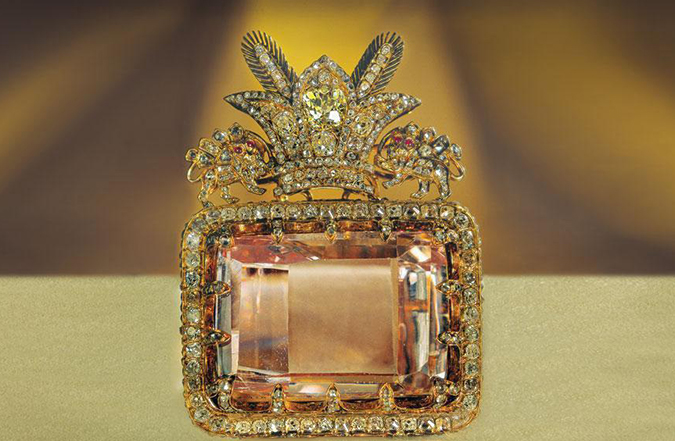
Jewelry Museum, Tehran, Iran.
At the end of the day, we will get a chance to see a variety of Persian hand-woven carpets and rugs in the Carpet Museum. Stay overnight in Tehran.
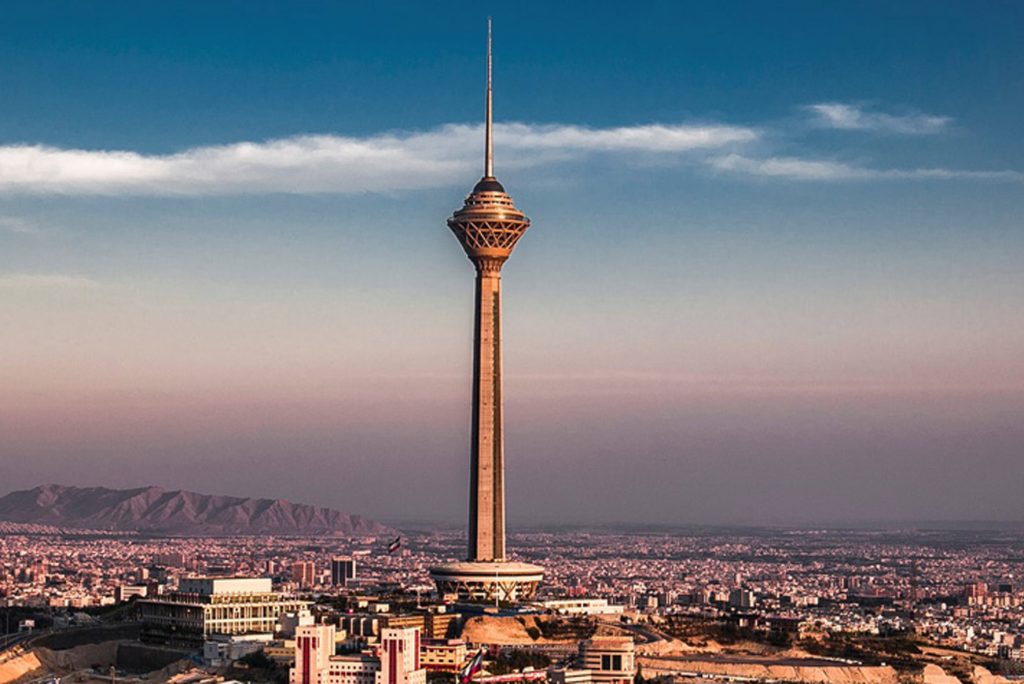
Milad Tower, Tehran, Iran
Attention: The priority of sightseeing might change due to the time of your arrival, the preference of your guide, and also the official and unofficial holidays of some museums.
Milad Tower, Tehran, Iran
Day 2: Visiting Tehran, Fly to Shiraz
A morning visit to Sa’ad Abad Complex. Our Tehran excursion will end at the Ceramic and Glassware Museum.
Then, we leave the hotel for a tasty Iranian lunch in a traditional restaurant.
Afterward, we will fly to Shiraz.
Day 3: Visiting Shiraz
Shiraz
It is the heartland of Persian culture and Persian architecture.
Above all, Shiraz is the city of roses and nightingales, gardens and poetry.
The tour begins with the glorious Karim Khan palace, the splendid Vakil mosque, Vakil Bazaar and Saray-e-moshir with its wonderful Persian architecture and interesting ethnic souvenir shops, Nasir Almolk mosque.
Then, we will stop for an Iranian lunch at one of the traditional restaurants of Shiraz.
This gorgeous city in Fars province is home to famous poets such as Hafez, Sa’adi and historical sites.
Hafez
His poems give us a special feeling and the peace in his tomb is really outstanding.
Saadi
Is a mystic poet and philosopher. In the 13 Century AD, he traveled to different countries.
Then, he gathers his experiences in verse and Rhyme prose in two books by the name of Boustan and Golestan. These two books give you Lots of inspiration and information.
We will visit these great poets’ tombs.
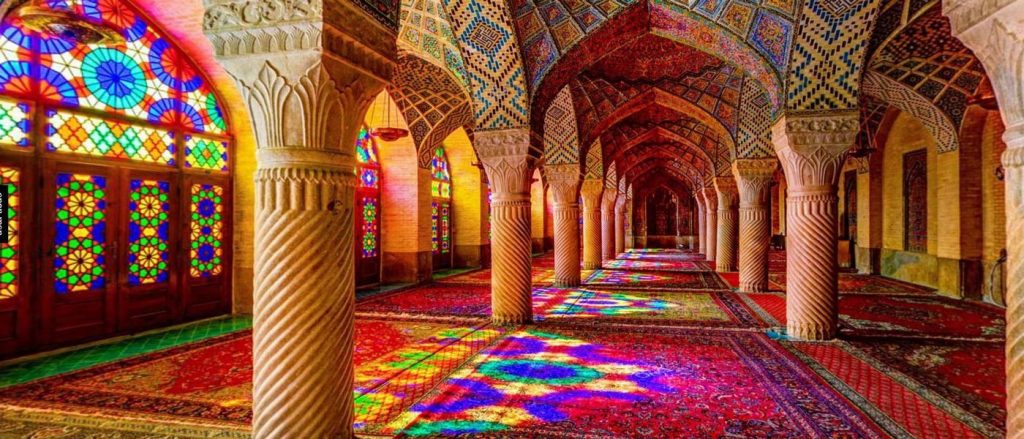
Nasir al_mulk (Pink) Mosque
Day 4: Excursion to Firouz Abad
Firouz Abad is one of the historical cities located in the south of Shiraz. It has some historical attractions as Ghal’eh Dokhtar and the Palace of Ardashir (Sassanid Dynasty 224-651 A.D).
Ghal’eh Dokhtar
Also famous as The Maiden Castle is a castle built by Ardeshir I, in present-day Fars, Iran, in 209 AD(Sassanid Dynasty). It is located on a mountain slope near the Firouzabad-Shiraz road.
Despite damages, it is still alive, its majesty still produces awe in visitors and catches their eyes.
Afterward, we will visit Castle of Ardeshir-e Babakan, which is a castle located on the slopes of the mountain on which Ghal’eh Dokhtar is situated on. Built-in AD 224 by Ardashir I of the Sassanian Dynasty, it is located two kilometers (1.2 miles) north of the ancient city of Goor, i.e. the old city of Firouzabad in Fars, in ancient Persia (Iran). Then, we will drive back to Shiraz.
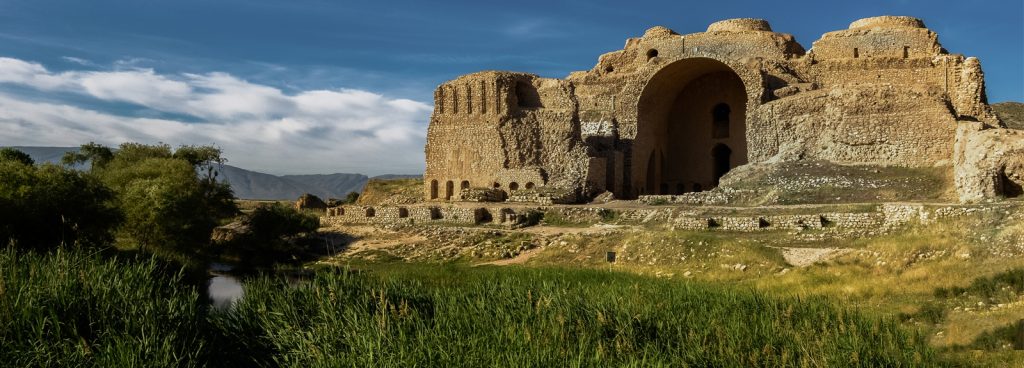
Ardeshir Babakan’s Palace
Day 5: Drive to Isfahan via visiting Persepolis & Necropolis
Persepolis
Founded by Darius I in 518 B.C., Persepolis was the capital of the Achaemenid Dynasty(550-330 B.C).
It seems that Darius planned this impressive complex of palaces not only as of the seat of government but also, a showplace and a spectacular center for the receptions and festivals of the Achaemenid dynasty kings and their empire such as Nowroz.(New Year)
Necropolis(Naqsh-e Rostam)
The next stop is Necropolis which is opposite Rahmat Mountain. Ten minutes driving to the north, proudly stands the Necropolis(Naqsh-e Rostam), the magnificent burial place of Achaemenid Dynasty kings. The site also provides seven bas-reliefs dating back to Elamite and Sassanian Dynasties.
Day 6: Visiting Isfahan
Visiting Isfahan.
Isfahan
It is the pearl of traditional Islamic archaeology and prides itself on having fascinating historical Persian gardens and palaces in Safavid Dynasty(16-17 A.D)
Our full-day tour includes Imam Square or Naqsh-e-Jahan which dates back to the Safavid Dynasty(16-17A.D) which is the second biggest square in the world after Beijing’s Tiananmen Square.
Architectural marvelous Sheikh Lotfollah and Imam Mosques, Aliqapu Palace, Chehel Sutoon and Hasht Behesht Palaces, and also visit one of the most famous bazaars in Iran, where we can purchase the arts & crafts for which Isfahan is so well renowned.
Stay overnight in Isfahan.
Day 7: Visiting Isfahan
Isfahan’s Jameh mosque displays several centuries of historical Islamic evolution. This mosque is a gallery of Islamic architecture.
In other words, it is the bride of the mosques.
Then, we will visit Vank Church which is one of the most beautiful Armenian churches in the world. It certainly, captures the attention of every visitor.
Our day will continue by visiting Monar Jomban, the tomb of a Sufi with its shaking minarets, and eventually, some historical bridges. The evening is free for leisure.
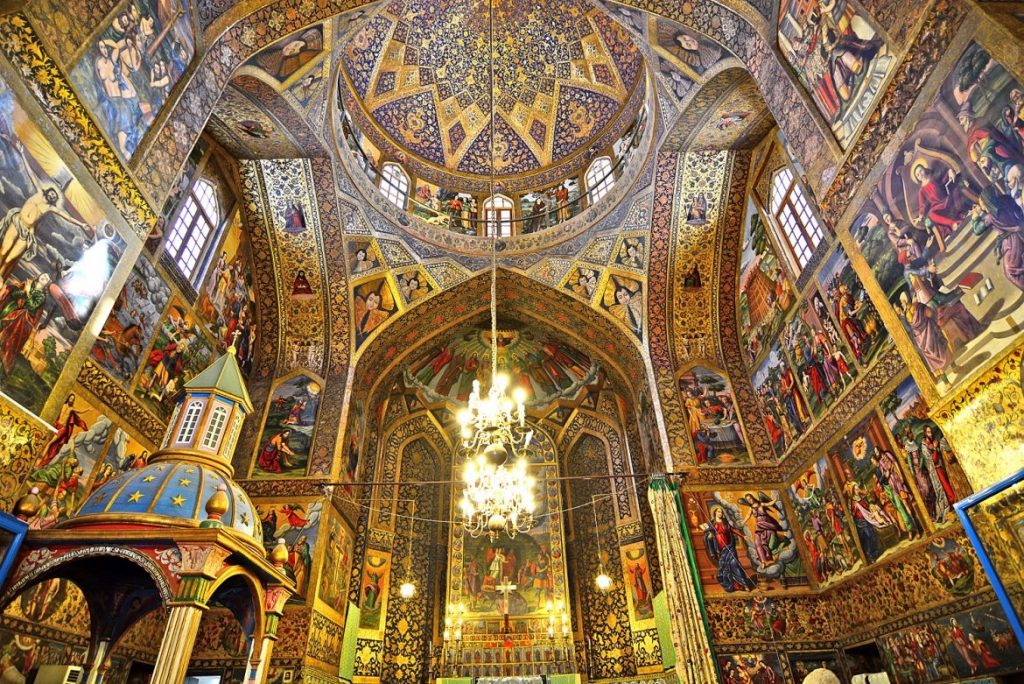
Vank Cathedral Church
Day 8: Driving to Kashan, via Abyaneh
On the way to Kashan, we will visit the UNESCO WORLD HERITAGE recognized village of Abyaneh which is located at the foot of Mount Karkas and in the vicinity of desert.
Appreciate the serenity of this quaint village with its splendid archaeology and meet the dwellers who speak, live, and dress in the original Persian style.
The next stop is Kashan where we will visit Tabatabaiha and Borojerdiha houses and some other historical places specially chosen by our tour guide and be acquainted with the previous century’s architecture, the Qajar Dynasty(19 A.D). Stay overnight in Kashan.
Day 9: Driving to Hamedan & visiting Hamedan
Today we will move toward Hamedan.
Hamedan province is situated in Middle Western Iran. It has long and severe winters from September to May with a great deal of snow; however, in summer its pleasant climate offers visitors a welcome break from the soaring temperatures elsewhere.
The province is famous for its raisins (1500 hectares of Grapevines) and in the Persian rug trade, it ranks second only to Kerman.
Ester & Mord Khay Tomb
One of the beautiful sights in Hamedan is Ester & Mord Khay Tomb.
Located in the city center, the structure has been constructed of brick and stone.
This is the tomb of Ester the Queen of Susa (the wife of Xerxes, king of Iran). Mordecai (Mord Khay) was her uncle.
The structure was originally constructed about 11 centuries ago, in order to pay homage to these two personalities.
This vicinity is a place for pilgrimage of the Jewish sect and is also held in respect by the Moslems.
Ganj Nameh Inscription
The next place to visit is the Ganj Nameh(The Letter of treasury) Inscription which dates back to Achaemenid Dynasty(550-330 B.C)
These inscriptions are relics from the time of ‘Darius’ and ‘Xerxes’ of the Achaemenid Dynasty(550-330B.C) which is located 5 km west of Hamadan at the end of the Abbas Abad Valley and has been engraved on a mountain. stay overnight in Hamedan.
Day 10: Visiting Hamedan
Avicenna was a Muslim Persian physician and philosopher, and wrote almost 450 treatises on a wide range of subjects, of which around 240 have survived. In particular, 150 of his surviving treatises concentrate on philosophy and 40 of them concentrate on medicine, our next step will be Avicenna Tomb.
Hegmataneh
It was an ancient city in Media in western Iran.
It is believed that Ecbatana is in Hagmatana Hill (Tappe-ye Hagmatāna), an archaeological mound in Hamedan.
According to Herodotus, Ecbatana was chosen as the Medes’ capital in the late 8th century BC by Deioces.
Under the Achaemenid Persian kings, Ecbatana, situated at the foot of Mount Alvand, became a summer residence.
Later on, it became the capital of the Parthian kings, at which time it became their main mint, producing drachm, tetradrachm, and assorted bronze denominations.
The wealth and importance of the city in the Persian empire are attributed to its location on a crucial crossroads that made it a staging post on the main East-West highway.
In 330 BC, Ecbatana was the site of the execution of the Macedonian general Parmenion by order of Alexander.
The next fascinating step will be Gonbad-e Alavian (or Masjid-e Alavian) which is a four-sided interesting 12th-century mausoleum belonging to the late Seljuk period. On the exterior, it resembles the Gonbad-e Sorkh of Maragheh. (If possible, we will see the site.)
Baba Taher
Our next site to visit is the tomb of Baba Taher, which is located in a park, surrounded by flowers and winding paths.
Baba Taher is known as one of the most revered and respectable early poets in Iranian literature.
He was known by the name of Baba Taher-e Oryan (The Naked), which suggests that he may have been a wandering dervish. His poetry has touched many souls.
Ali Sadr Cave
In the afternoon, we will drive to Ali Sadr Cave. This cave is the world’s largest water cave which attracts millions of visitors every year.
It is located about 100 kilometers north of Hamedan, western Iran.
Since the cave is situated between the large cities of Hamedan, Tehran, and Qom it is a popular destination for Iranians. Tours of the cave are available by pedal boats.
Day 11: Drive to Kermanshah, visit Kermanshah(189km)
Kermanshah
It has a moderate and mountainous climate. In an old town called Kangavar, we will visit the Anahita Temple.
The goddess of abundance, water, and fertility in ancient Persia. Carry on the old caravan route to Bistoon dating back to the Middle Paleolithic.
The Achaemenian Dynasty inscriptions offer details in 1,200 lines about the battles of Darius the Great who fought against the enemies.
This was the site where the decisive battle took place, leaving the famous Tablets of Darius.
Nearby in the village of Sahneh, we can visit the tomb of Ostad Khalil Alinejad the best player of Tanboor in the world.
In Kermanshah visit the Sassanid rock carvings of Tagh-e-Bostan.
These bas-reliefs, cut from the stone cliff, depict royal scenes of battles and hunts reflecting the glorious history of the Sassanid Kings
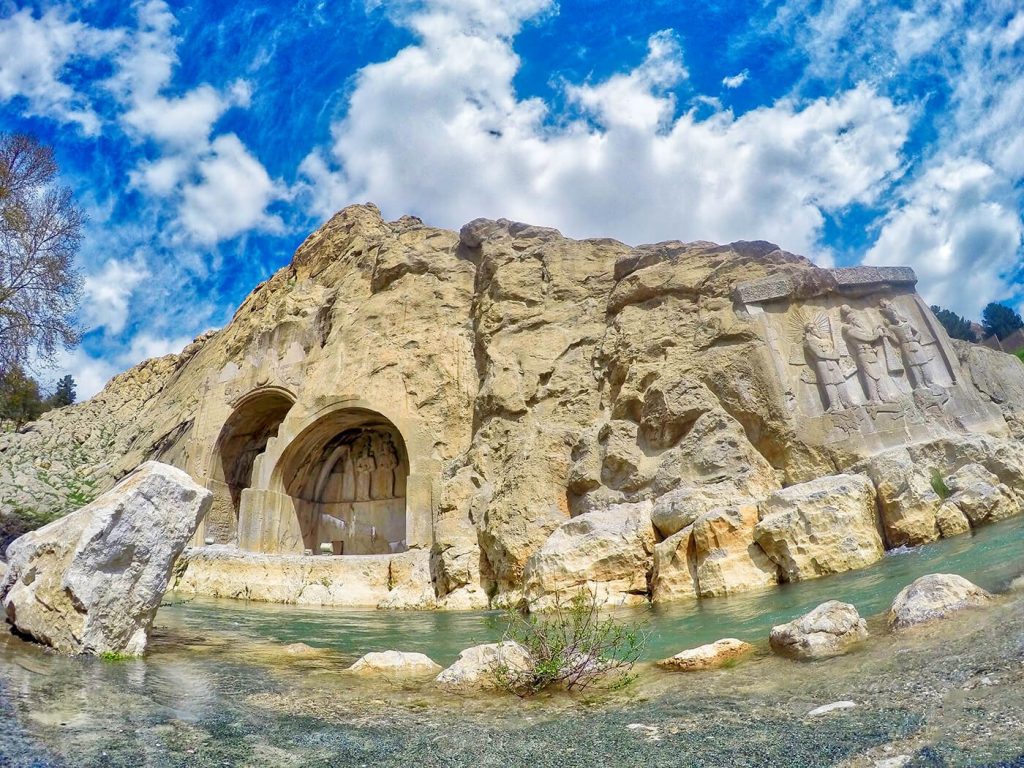
Taghe_Bostan
Day 12: driving to Takab via Sanandaj & Oramanat
Today we move toward Takab.
On the way, we will visit Sanandaj which is the capital of Kurdistan province. The economy of Sanandaj is based upon the production of carpets, processing hides and skins, milling rice, refining sugar, woodworking, cotton weaving, metalwork, and cutlery.
Among the sightseeing of Sanandaj, you may visit the old bazaars of Sanandaj.
In addition, Hajar Khatoon Mosque is architecturally a unique and ancient Muslim mosque (now a tourist destination) in the city. Hajar Khatoon Mosque was built more than a hundred years ago by Haj Sheikh Shokrollah.
Then, we reach the Oranamat Takht village.
The Oramanat Takht Village is one of the attractive rural areas of Kurdestan which besides its panoramic views has valuable tourism capacities because of the annual performance of an ancient and wonderful ceremony of Peer Shahriar.
The Sirvan River flows in the deep valleys of this region and enters Iraq. Here the lands are covered with walnut, pomegranate, fig, and mulberry trees.
Takht-e Suleyman
Afterward, we will reach one of the archaeological sites of Takab. Takht-e Suleyman which is in north-western Iran, and situated in a valley set in a volcanic mountain region.
The site includes the principal Zoroastrian sanctuary partly rebuilt in the Ilkhanid (Mongol) period (13th century) as well as a temple of the Sassanian period (6th and 7th centuries) which is dedicated to Anahita. The site has important symbolic significance. The designs of the fire temple, the palace, and the general layout have strongly influenced the development of Islamic architecture. Stay overnight in Takab
Day 13: Driving to Tabriz. On the way visiting Kandowan
we will visit Kandowan village.
Kandowan
It is an ancient village in Sahand Rural District in the Central District of Osku County, East Azerbaijan Province, northwestern Iran. It is situated in the foothills of Mount Sahand, near.
Day 14: Visiting Tabriz
Lots of sightseeing here catches the eyes of visitors such as the former Shah Goli or the present Eil Goli ( Shah’s pool) which is the name of a large park in Tabriz.
It was used as a summer palace during the Qajar dynasty (19 A.D) when Tabriz was the official residence of the Prince of Iran). Then we’ll visit the exotic bazaar which is one of the oldest Bazaars in the Middle East and the largest roofed traditional bazaar in the world.
It is one of the World Heritage Sites by UNESCO in July 2010.
Kabood Mosque
The next place is Kabood Mosques which is the Remains of a Great Mosque Kabood or Jahanshah Mosque.
It is one of the works by Abul Mozaffar Jahanshah bin Qara Yousef, a member of the Qaraqoyounlu tribe, in Tabriz.
It dates back to 870 AH subsequent to the supervision of Jahanshah’s wife, Jan Beigum Khatoon.
Then we will visit the holy Serkis church. Stay overnight in Tabriz.
Day 15: Driving to Kaleibar via Jolfa
Today we will move toward Kaleibar. On the way, we will visit Jolfa which is one of the most important border towns of Iran and it is located near the Aras River and the fascinating forests of Arasbaran.
Julfa is the stronghold of the Armenian Christians who possess a rich and unique culture of their own.
We will visit the ancient churches there. The St. Stepanos Monastery (Maghartavank) is an Armenian monastery about 15 km northwest of Jolfa City, East Azarbaijan Province northeast Iran. Its construction dates back to the 9th century.
Day 16: Visiting Kaleibar driving to Ardebil
Today we will visit the fortress of Babak Khorramdin in Kaleibar. Babak Tower (Ghale-eh Babak) is where Babak-e Khorramdin lived. It is 3200 m above sea level. The landscape is fantastic.
Bābak Khorram-Din
Was one of the main Persian revolutionary leaders of the Iranians of the Khorram-Dinān. He was the leader of a local freedom movement fighting the Abbasid Caliphate.
To access the castle, you have two options: you can leave the car in an entertainment area near the town and climb up towards the castle through dense forests or drive to the point the road extends, leave the car there and have an hour’s trek to the castle.
Afterward, we will move toward Ardabil.
Day 17: Visiting Ardebil
Ardabil
It is a beautiful and unforgettable city which is located at the foot of Sabalan Mountain (the bride of Persian architecture of monuments).
In this city, the Safavid dynasty took up residence. We will visit the mausoleum of Sheikh Safi-ad-Din-e-Ardabili.
It is an impressive Persian architecture, comprising the following components: the mausoleums of Sheikh Safi and Shah Isma’il, Chini Khaneh (meaning the house of chinaware), a mosque, Jannat Sara (meaning the house of paradise), Khanqah (the house of Dervishes), Cheragh Khaneh (the house of lamps), Shahid Khaneh (the house of martyrs) and Chelleh Khaneh (the place where devotees shut themselves up during the forty days of Lent).
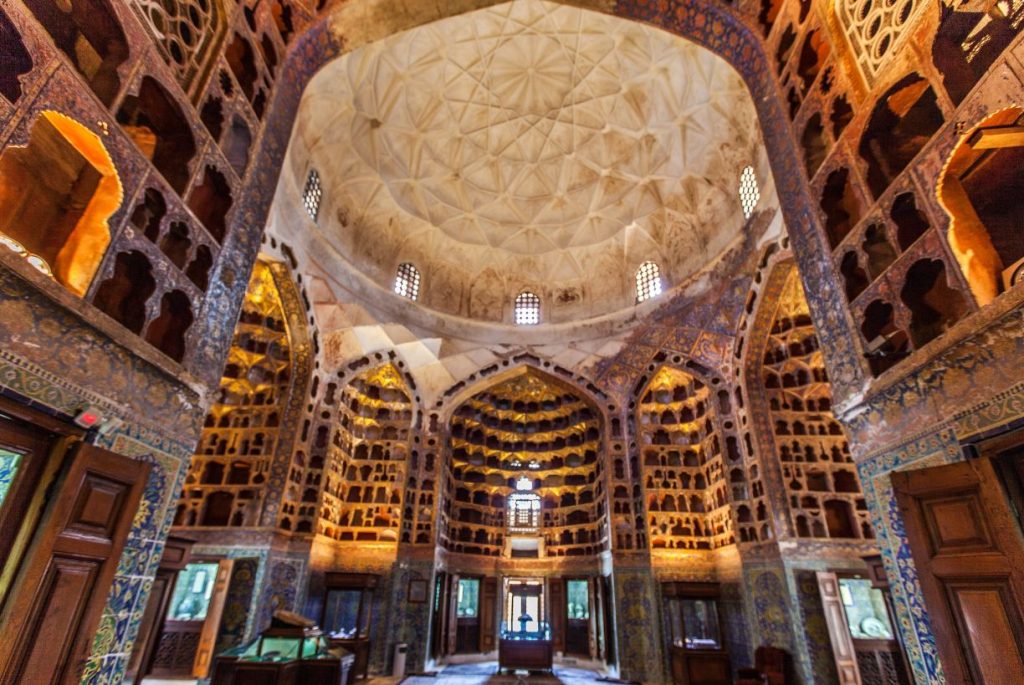
Sheikh Safi Ardebili.
Day 18: Driving to Masouleh
Today, we will move toward the historical Masouleh village.
The buildings are step-like and their architecture is unique. so, the courtyards and roofs both serve as pedestrian areas similar to streets. The inhabitants do not allow any motorbike to enter, due to its unique layout.
It is the only village in Iran with such a prohibition.
However, the small streets and many stairs simply also wouldn’t make it possible for vehicles to enter.
Yellow clay coats the exterior of most buildings in Masooleh. This allows for better visibility in the fog.
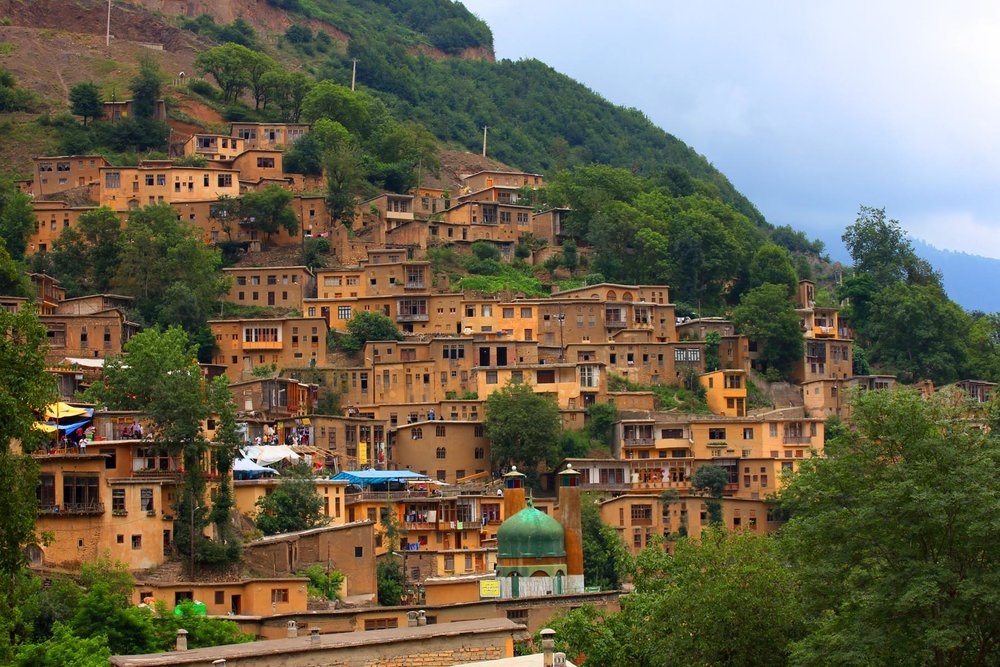
Masouleh, Gilan Province, Iran
Day 19: Driving to Ghazvin, Visiting Anzali swamp
Move toward Ghazvin.
we have an excursion to the Anzali swamp. The biggest swamp in the world. Stay overnight in Ghazvin.
Day 20: Visiting Alamoot, driving to Tehran
We’ll start today’s adventure with Alamoot. Near Ghazvin, is the historical castle of Alamoot which is the unique memory of the God of Alamoot (Hasan Sabbah). Hulagu Khan destroys the fortress on December 15, 1256, as part of the Mongol offensive on Islamic southwest Asia.
Stay overnight in Tehran.
Day 21: Depart Iran
Depart Iran the land of warmth and hospitality with fond memories.
-
Includedvisa invitation letter for Iran visaDomestic AirfareProfessional GuideLocal airport transportationAccomodationBreakfast
-
Not IncludedIran visa fee at the airport or embassyDeparture taxesEntry FeesPortage feeLaundryLunch and Dinner
Similar Tours
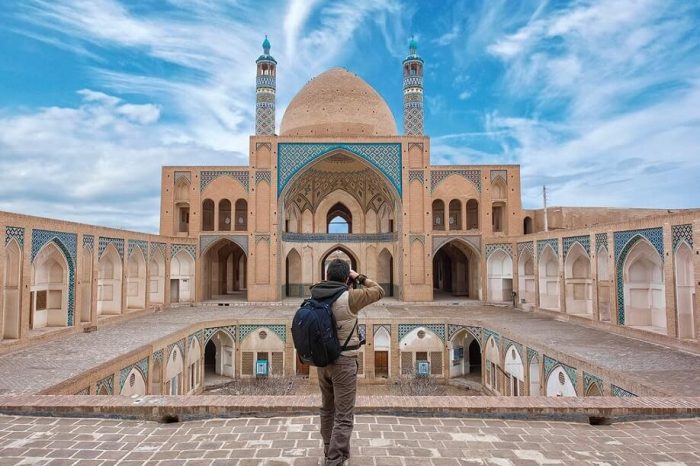
Iran Glory Tour
Iran Glory Tour is a short trip which provides an opportunity for you to visit the high lights of Iran in 8 days.
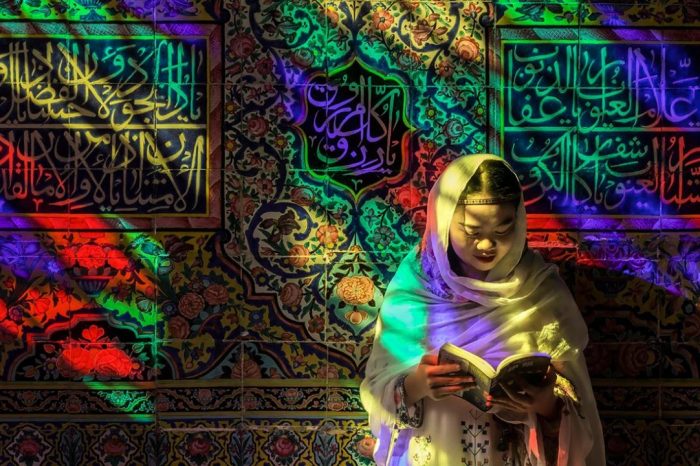
Iran Women-Only Tour
is the best and most superb opportunity to discover culture and camaraderie in Iran
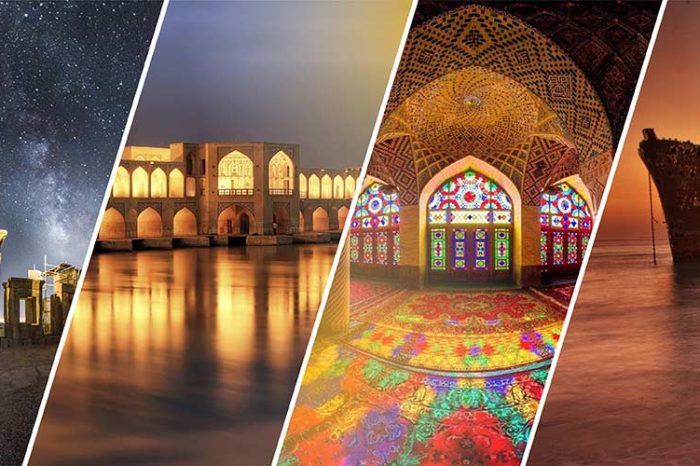
Romance of Persia Tour
Works of art including traditional music, delicious food and pastry are among things you will enjoy there.
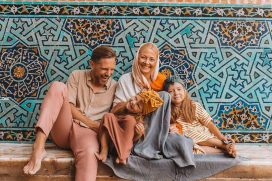
Iran Family Tour
Your sense of adventure does not vanish just because you have kids!! Our family tour consists of 12 days.
